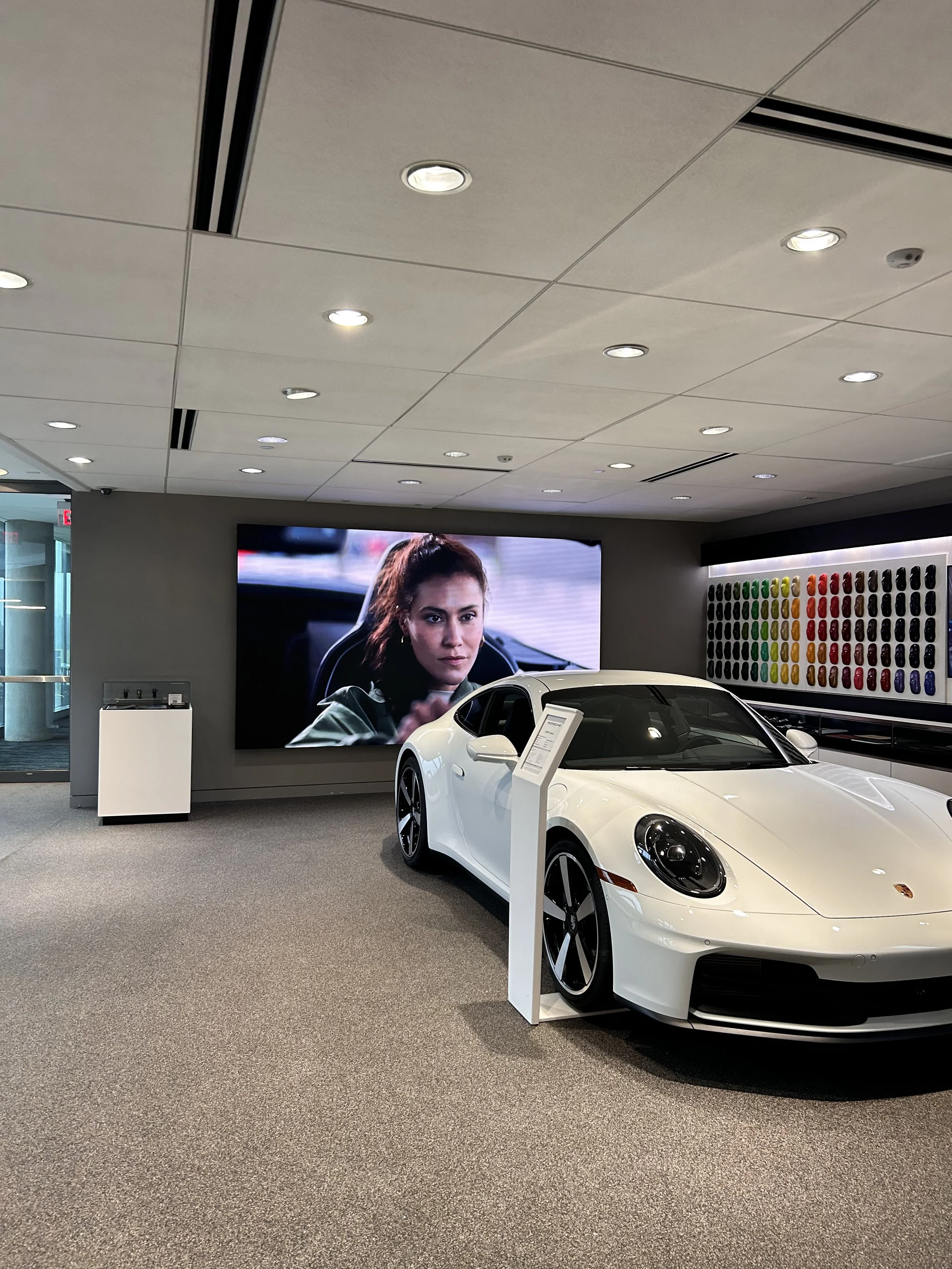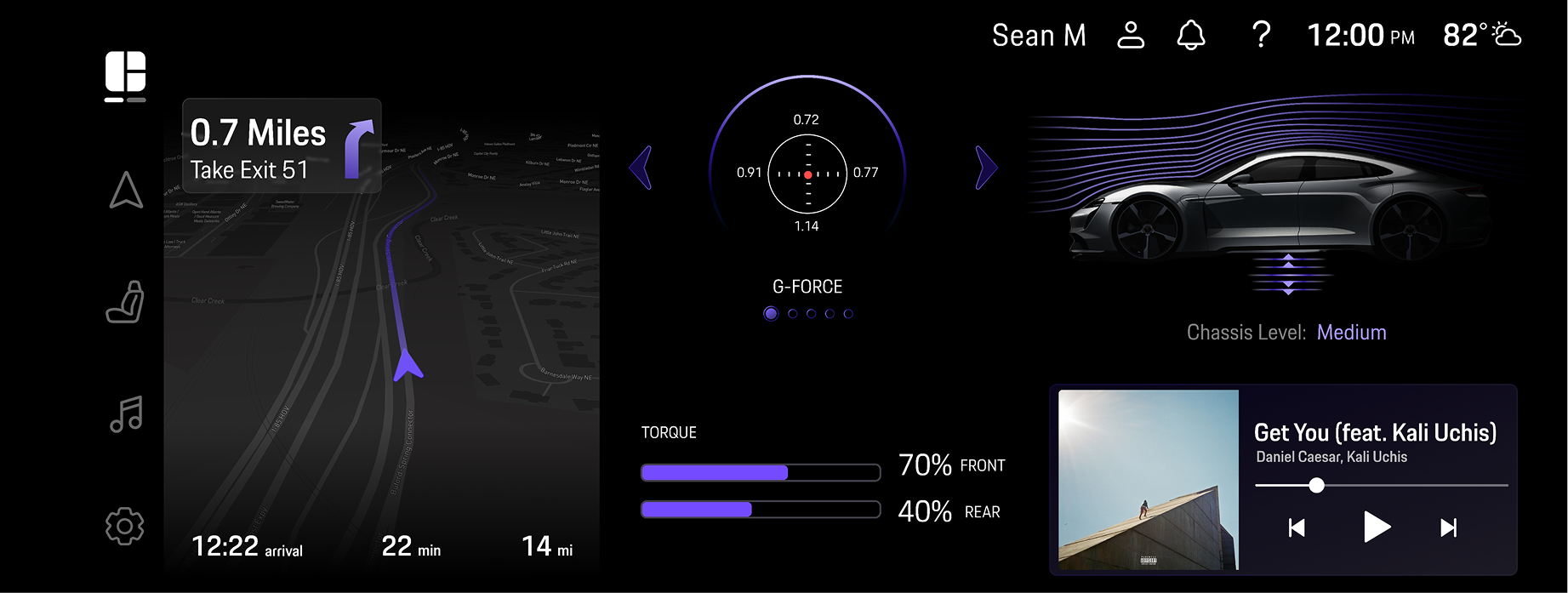Porsche: EV Experience Sports Mode
A research-driven exploration of Porsche’s EV interior experience, balancing cutting-edge digital innovation with Porsche’s analog soul. The project examined how to reduce range anxiety, unify sensory experiences, and preserve the thrill of driving in a rapidly evolving EV market.
Role
UX Designer & Researcher
Date & Duration
2025, made in 10 weeks
Type
Team
Case Study
Porsche Cars North America
Within Porsche’s EV interior experience, the challenge I focused on was the Sports Mode interface. The goal was to design a performance-driven interaction layer that could heighten focus and precision without interfering with Porsche’s established brand identity.
Problem
A redefined EV interior experience that harmonizes physical and digital controls, introduces transparency around range and performance, and creates unified sensory modes. The outcome is a Sports Mode interface that reduces anxiety, enhances control, and preserves Porsche’s timeless driving identity.
Solution
Audience Insights
Primary
First-time Porsche EV buyers
Secondary
Existing Porsche owners considering electric models
EV owners outside the Porsche ecosystem
Tertiary
Research Insights
Completed 9 surveys (160 responses), 30 interviews, 5 competitor benchmarks, Porsche Experience Center field study.
68/100%
Of drivers under 35 want EVs to feel smart and connected.
71/100%
Of loyal Porsche owners fear technology may interfere with driving purity.
62/100%
Prefer a mix of physical and digital controls for trust and precision.
54/100%
Felt Porsche’s digital ecosystem was disconnected from its brand experience.
Visual Language & Design Pillars
1. Sports Mode
Interfaces heighten focus and responsiveness—direct, lean, and purposeful in motion. Every element serves clarity at speed, amplifying control without distraction.
The design bridges Porsche’s analog legacy with its digital future. Physical touchpoints ground the drive, while digital layers extend capability without diluting identity.
2. Heritage Balance
3. Trust Through Touch
Interactions remain tactile, precise, and dependable. Critical functions stay physical for confidence, while digital complements enhance personalization seamlessly.
4. Connected Precision
Technology integrates across devices and contexts with intention. Interfaces anticipate needs without excess, unifying the ecosystem into a clear and cohesive experience.
Key Features
1. Performance HUD
Displays only essential driving data—speed, RPM, range horizon—optimized for quick glances during high-performance driving.
2. Minimal Interface Layer
Non-critical functions fade from view, leaving a clean, distraction-free cockpit where focus remains on the road.
3. Precision Haptics
Physical controls provide immediate tactile feedback, ensuring drivers can adjust without looking away from the drive.
4. Dynamic Visual Cues
Sharp contrasts and high-visibility indicators highlight critical changes—alerts, braking, or power shifts—delivering clarity at speed.
Personal Reflection
Working on this Porsche project challenged me to design within the boundaries of a brand with such a strong legacy. It pushed me to think critically about how to balance heritage with innovation, and how credibility and precision are communicated through every design decision. This experience sharpened my ability to problem-solve around brand constraints while still designing with intention, as well as strengthened my confidence in creating designs that feel both authentic and future-ready.









